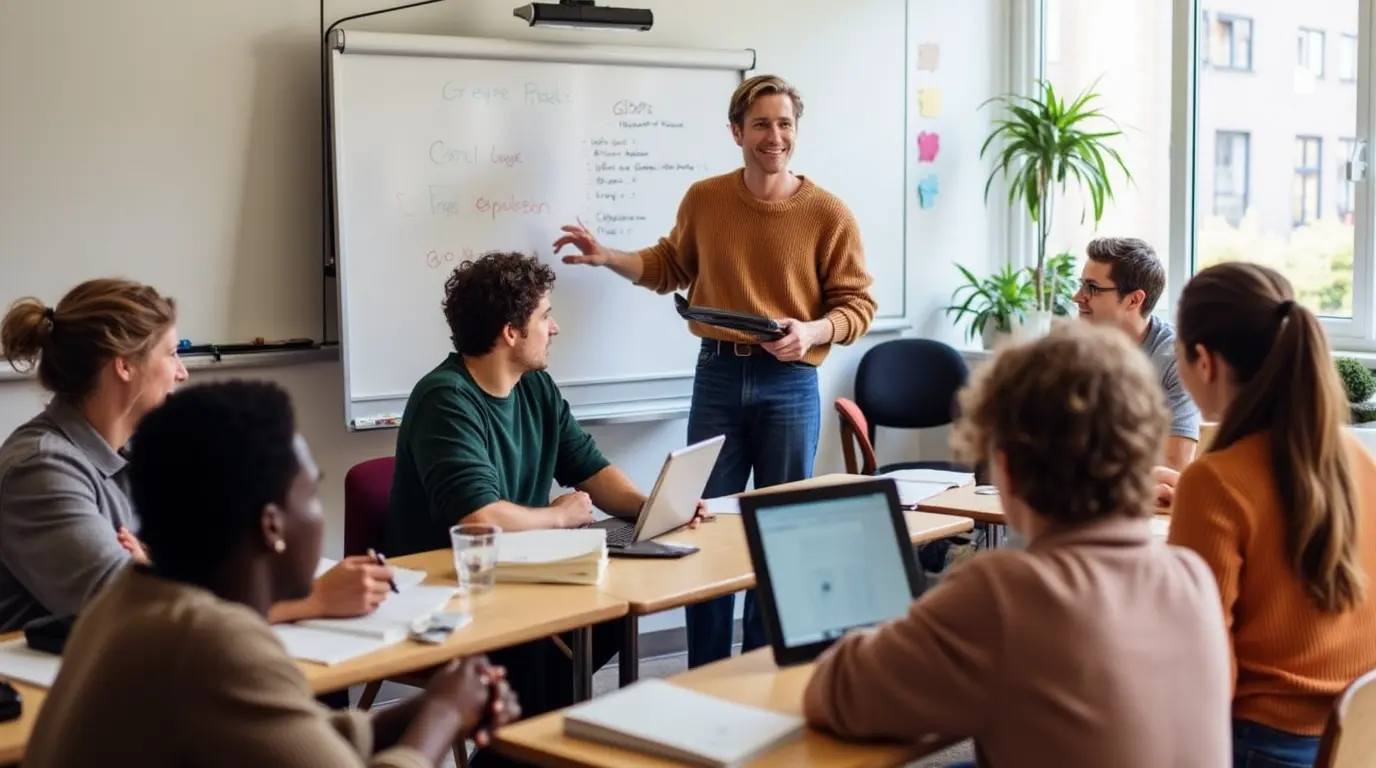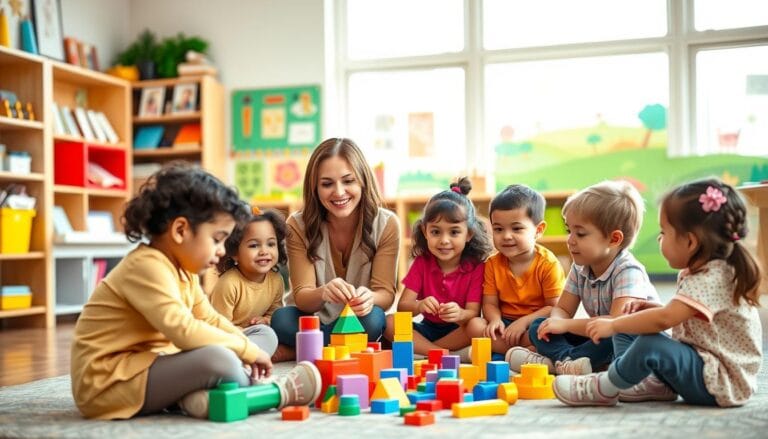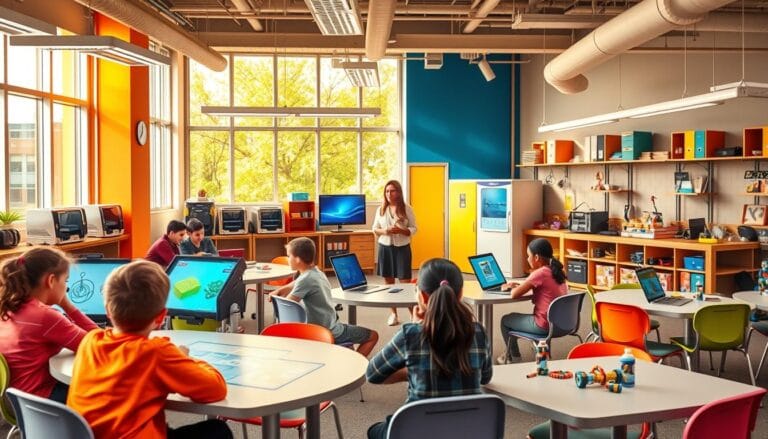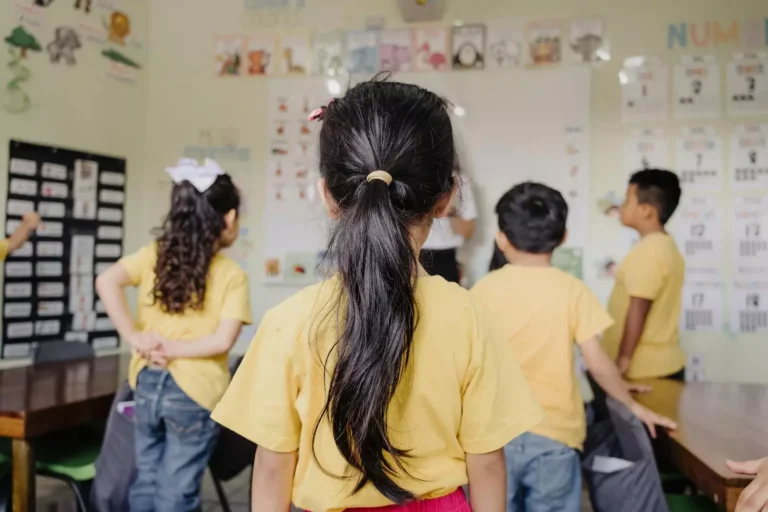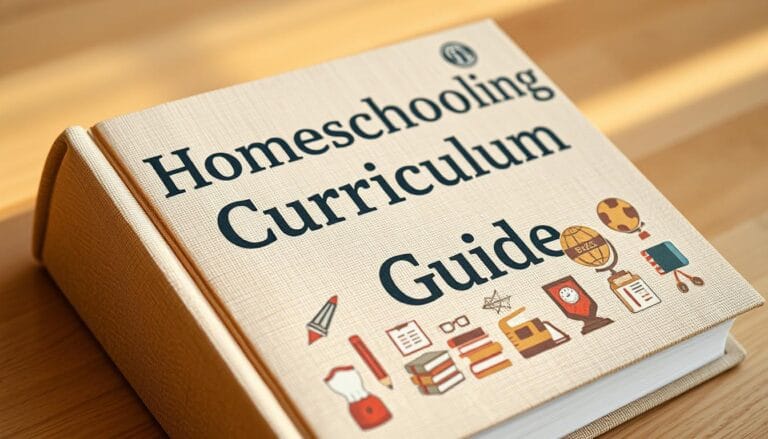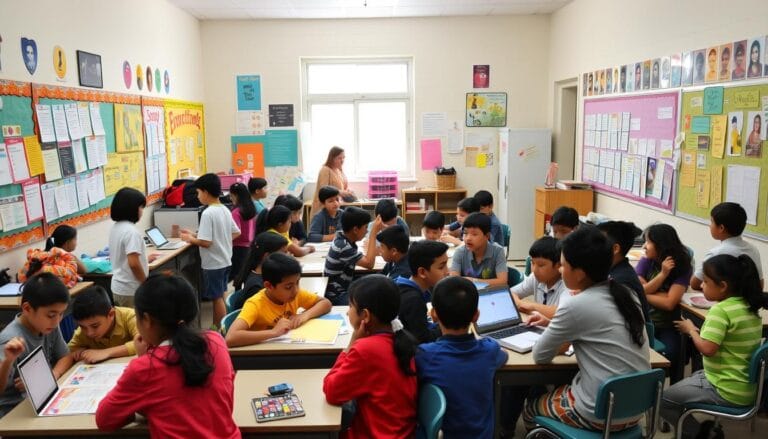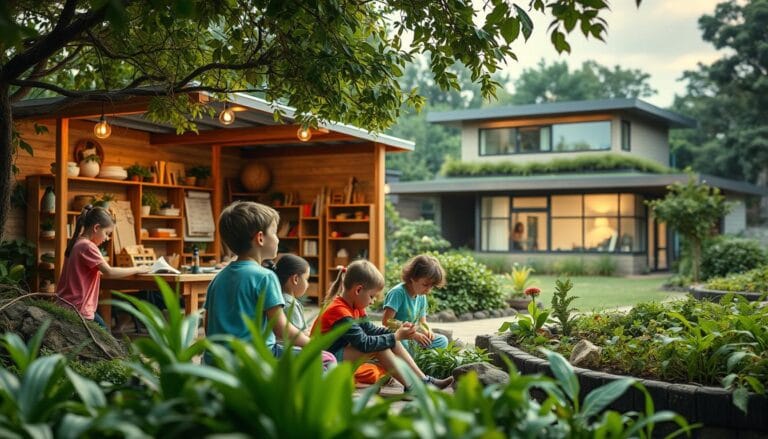10 Creative Learning Strategies to Engage Students
Imagine a classroom where students are full of excitement. Their minds are buzzing with curiosity and imagination. This isn’t just a dream; it’s a reality with creative learning.
Today, old teaching methods don’t cut it anymore. Creative learning is key to unlocking students’ potential. It boosts engagement and teaches important 21st-century skills. Studies show that 70% of teachers see creativity as essential in education.
Table of Contents
Students do best in places that spark their imagination. By using new strategies, you can make learning exciting. It encourages students to explore, try new things, and share their thoughts.
Teachers who use creative learning see a big boost in student motivation. With the right materials, 50% of kids are more into creative projects. Your classroom can become a place of innovation and curiosity.
This article will show you ten strategies to change your teaching. By using these creative methods, you’ll not only spark your students’ imagination. You’ll also prepare them for a future that needs adaptability, critical thinking, and teamwork.
Understanding Student Engagement in Modern Education
In today’s fast-paced digital world, keeping students focused is a big challenge for teachers. Studies show that students can only pay attention for 10-15 minutes in class.
The digital age has changed how students learn. With so much information and distractions online, they need more interactive and hands-on learning.
The Challenge of Limited Attention Spans
Students face a lot of information from different places, making old teaching methods less effective. Important facts include:
- 75% of learning happens through doing things
- Learning through projects can boost interest by 50%
- More than 80% of teachers think giving students more freedom helps them do better in school
Impact of the Digital Age on Learning
Technology has changed how we learn, offering new ways to be creative and engage with learning. Students want learning that’s personal and fun, matching their tech skills.
“Education is not the filling of a pail, but the lighting of a fire.” – William Butler Yeats
Benefits of Active Student Participation
When students take part in their learning, amazing things happen. Working together and being interactive can greatly improve:
- Thinking skills
- Being creative and solving problems
- Remembering information
- Staying motivated in school
By using these new methods, teachers can make learning more fun, effective, and inspiring for today’s students.
Creative Learning and Interactive Teaching Methods
Turn your classroom into a lively place where students love to learn. Old teaching ways don’t grab students’ interest anymore. They need new methods that spark their creativity and problem-solving skills.
“Creativity is intelligence having fun” – Albert Einstein
Today’s teachers are finding new ways to make learning fun and engaging. They move away from just lecturing. Instead, they make students part of their learning journey.
- Project-based learning that connects real-world challenges to classroom content
- Interactive technology integration to enhance student participation
- Collaborative exercises that promote team-based problem-solving skills
- Hands-on activities designed to stimulate divergent thinking
Studies show that creative learning boosts student interest. For example, project-based learning sharpens critical thinking. It also teaches students to tackle complex problems in practical ways.
Key strategies include:
- Utilizing interactive educational technologies
- Designing collaborative classroom experiences
- Encouraging student-led investigations
- Creating multisensory learning environments
By using these new teaching methods, you’ll make your classroom exciting. It will spark curiosity, encourage active learning, and get students ready for future challenges.
Implementing Technology-Enhanced Learning Solutions
The digital revolution has changed education, offering new ways to engage students. Technology-enhanced learning solutions provide tools for dynamic, interactive classrooms.
Modern educational technology opens new paths for student self-discovery and learning across subjects. Digital tools are key in creating engaging, personalized learning spaces for tech-savvy students.
Digital Tools for Classroom Engagement
Educators can use many digital resources to spark student interest and participation:
- Interactive whiteboards that encourage collaborative learning
- Student response systems for real-time feedback
- Collaborative software that promotes team-based projects
Virtual Learning Platforms
Virtual platforms extend learning beyond the classroom. These digital spaces offer:
- Flexible learning schedules
- Personalized learning paths
- Global collaboration opportunities
Technology enables students to explore knowledge in ways never before possible, breaking down geographical and educational barriers.
Interactive Educational Apps
Educational apps make learning fun and interactive. Platforms like Kahoot! and Quizlet make studying enjoyable while supporting learning across subjects.
By using these technology-enhanced solutions, you’ll create a more dynamic, student-centered learning environment. This supports individual growth and collaborative exploration.
Gamification and Reward Systems
Turning education into something fun requires new ways to teach. Gamification is a key strategy to make learning exciting. It turns boring lessons into fun, interactive games.
Today’s students want learning to be hands-on and fun. By adding game elements to lessons, teachers can make students more excited and involved. The goal is to make learning feel like a game, not homework.
- Use points to track how well students are doing
- Give out digital badges for achievements
- Make leaderboards to show who’s leading
- Set up challenges that get better as you progress
Tools like Classcraft and Minecraft Education make learning a game. They create worlds where students can explore, compete, and learn at the same time. Studies show gamified learning can increase student interest by up to 60%.
“Learning should be a thrilling journey, not a monotonous task.” – Educational Innovation Expert
Good gamification isn’t just about giving out rewards. It’s about making learning meaningful and fun. By linking games to learning goals, you can turn your classroom into a lively place to learn.
The best gamification plans focus on:
- Setting clear learning goals
- Creating challenges that get harder as you go
- Providing quick feedback
- Encouraging teamwork to solve problems
By using these new methods, you’ll make a classroom where students love to learn and take part.
Outdoor and Experiential Learning Approaches
Going outside the classroom opens up a world of learning. It makes education fun and exciting. Students learn by doing things in their environment.
- 60% increase in student motivation through experiential programs
- 25% improvement in knowledge retention compared to traditional classrooms
- 85% of educators recognize enhanced social-emotional skills
Nature-Based Learning Activities
Nature is a great place for learning. Students can learn science by watching ecosystems and tracking wildlife. They can also do environmental experiments. These activities help students understand more and connect with nature.
Field Trips and Real-World Connections
Learning in real life makes education more interesting. Field trips to museums and local businesses show how what we learn applies. These trips spark curiosity and show how knowledge is used in the real world.
Movement-Based Learning Strategies
Moving around while learning makes students more engaged. Outdoor activities that mix exercise with learning help students:
- Increase cognitive function
- Reduce stress
- Improve attention spans
- Boost creativity
“Learning is most effective when it engages multiple senses and connects students directly with the world around them.” – Educational Research Institute
Outdoor and experiential learning change education. It turns learning into an active, memorable journey of discovery.
Collaborative Learning and Peer Interaction
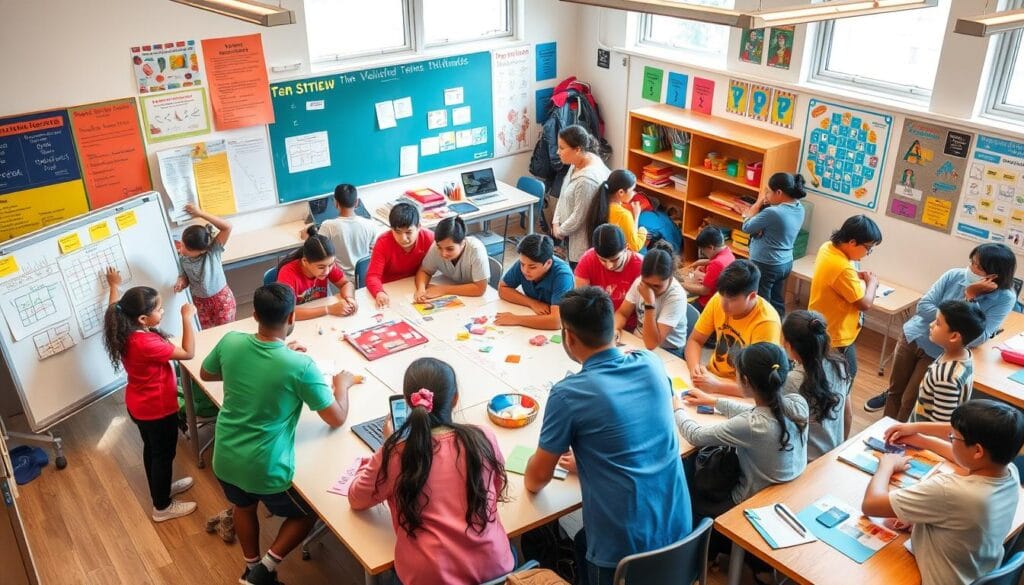
Changing classrooms into places where students love to learn needs new ideas. Collaborative learning is a key strategy. It helps students solve problems and work together, getting ready for the real world.
“Collaboration is the essence of learning in the 21st century” – Education Innovators Network
Students do best when they learn from each other. Learning together makes school more than just sitting in a classroom. It brings many benefits:
- Enhanced critical thinking skills
- Improved communication abilities
- Deeper understanding of complex concepts
- Development of social and interpersonal skills
Research shows how great collaborative learning is. Students who work in groups remember things better, up to 25% more than those who don’t. Learning with friends makes school a place where everyone helps each other.
Here are some ways to make learning together work:
- Think-pair-share activities
- Group research and presentation projects
- Peer tutoring sessions
- Interactive problem-solving challenges
Teachers can use different subjects together to make learning more like real life. Technology helps a lot, making it easy for students to work together and share ideas.
The future of education is collaborative, interactive, and student-centered.
Role-Playing and Simulation-Based Learning
Learning becomes truly transformative when students step beyond traditional classroom boundaries. Role-playing and simulation-based learning offer powerful strategies to engage students through immersive experiences. These experiences spark artistic expression and divergent thinking.
Simulation techniques have revolutionized educational approaches across multiple disciplines. From healthcare training to professional development, these interactive methods provide students with unique opportunities. They explore complex scenarios safely.
Interactive Scenarios
Interactive scenarios allow students to:
- Develop empathy by experiencing different perspectives
- Practice critical decision-making skills
- Engage in realistic problem-solving challenges
“Simulation is not about perfection, but about learning through dynamic engagement.” – Educational Innovation Research Team
Real-World Problem Solving
By creating authentic learning environments, educators can help students translate theoretical knowledge into practical skills. Role-playing enables learners to:
- Explore complex social interactions
- Test hypothetical solutions
- Understand nuanced professional challenges
Group Dynamic Activities
Group simulations foster collaborative learning, encouraging students to develop communication skills and teamwork. These activities promote divergent thinking by challenging participants to approach problems from multiple angles.
Research shows that simulation-based learning improves skill development and increases student confidence. Active learning strategies transform passive educational experiences into dynamic, meaningful interactions.
Assessment and Feedback Strategies
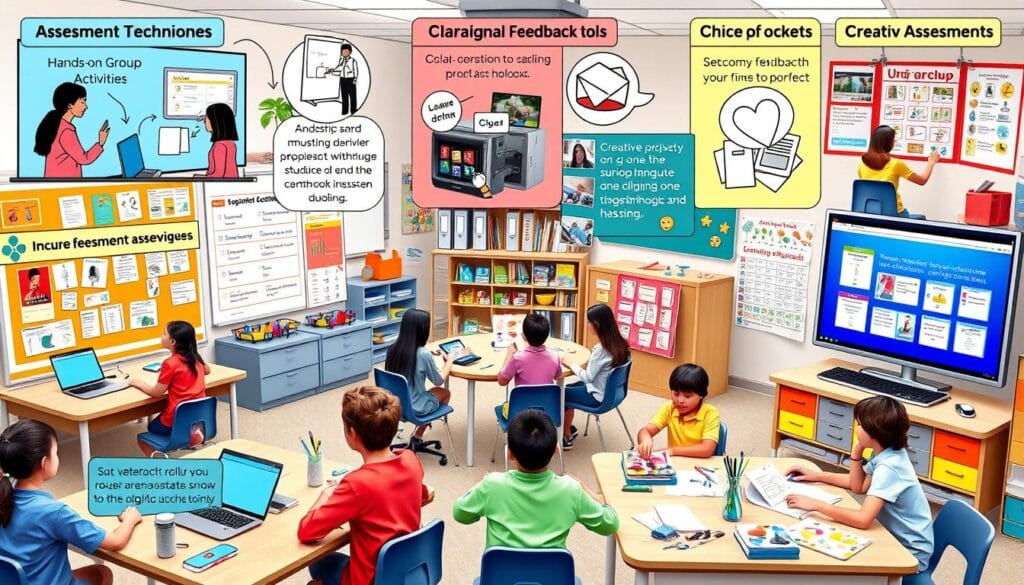
Modern education is changing fast. New ways of teaching and learning are emerging. How we check if students have learned something is evolving too.
Teachers now use new methods to see how well students understand. These methods give a deeper look into what students can do.
- Video presentations to evaluate communication skills
- Podcasting for collaborative knowledge demonstration
- Interactive poster galleries
- Three-minute elevator pitch assessments
- Role-play scenarios
“Feedback is the breakfast of champions.” – Ken Blanchard
Digital tools are changing how we check student work. Virtual reality and tools like Minecraft Education Edition let students tackle real-world problems. These tools help students think critically and develop practical skills.
Studies show that new feedback methods are very helpful:
- Formative feedback can increase student engagement by 30%
- Regular feedback reduces failure rates by 15%
- Written feedback can improve assignment performance by 20%
- Audio and video feedback enhance student-instructor connections
Using different ways to check student work makes learning better for everyone. It helps students grow and learn in their own way. The goal is to make checking work a supportive process that helps students keep getting better.
Conclusion
Using imagination development in your classroom can change how students learn and engage. The creative methods discussed in this article help break free from old teaching ways. These methods often limit thinking and curiosity.
By using hands-on activities and new teaching methods, you can make learning exciting. This approach boosts thinking skills and emotional strength. Students who learn in creative ways remember more and solve problems better in school.
Your effort to use these methods shows a big change towards better learning. Each method, from tech use to hands-on learning, helps build a strong learning plan. This plan prepares students for the challenges of the real world.
The future of education depends on your ability to be flexible, creative, and inspiring. These learning strategies are more than just teaching methods. They are ways to unlock students’ potential, spark curiosity, and keep a love for learning alive long after school.


